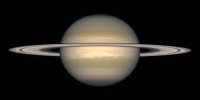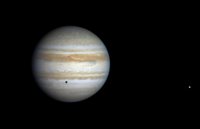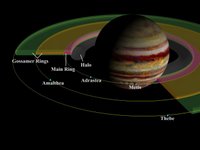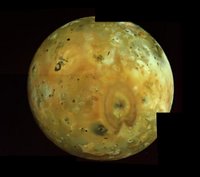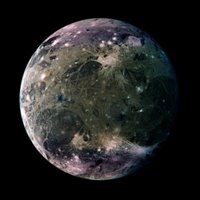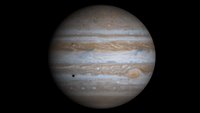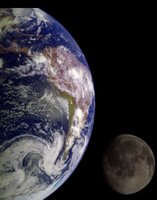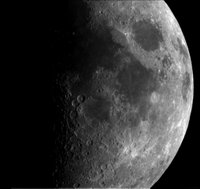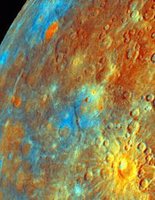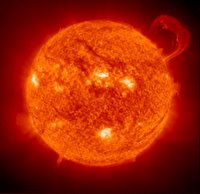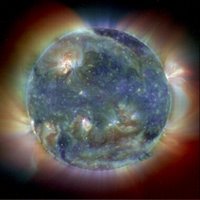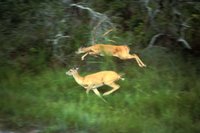 | Title: White-tailed Deer, Alternative Title: (Odocoileus virginianus), Creator: Van Riper, Steve, Source: WO2787-023, Publisher: U.S. Fish and Wildlife Service, Contributor: DIVISION OF PUBLIC AFFAIRS. |
Language: EN - ENGLISH, Rights: (public domain), Audience: (general), Subject: Animals, Mammals, Endangered species, Wildlife.
File size: 113 KB, Format: JPEG image (image/jpeg), Dimensions: Screen: 1050px x 700px, Print: 7.00 x 4.67 inches, Resolution: 150 dpi (mid, presentation quality), Depth: Full Color.
Unless otherwise indicated, resources in the Digital Library System are in the public domain. No restrictions or copyrights are placed upon these materials. You may credit the source of the resource using the information contained in the "Creator" or "Rights" field of the resource record.
Download Full High Resolution ImageFile size: 403 KB, Format: JPEG image (image/jpeg), Dimensions: Screen: 2500px x 1667px, Print: 10.00 x 6.67 inches, Resolution: 250 dpi, Depth: Full Color.
Generally speaking, works created by U.S. Government employees are not eligible for copyright protection in the United States. See
Circular 1 "COPYRIGHT BASICS" from the U.S. Copyright Office.
Anyone incorporating a work of the U.S. Government into a copyrighted work should be aware of 17 U.S.C. § 403. This section requires a copyright notice to contain a statement identifying what portions of the work consist of a work of the U.S.Government.
The white-tailed deer can be found in southern Canada and most of the United States, except for the Southwest, Alaska and Hawaii.
NatureWorks -White-tailed DeerPopulations of white-tailed deer (Odocoileus virginianus) have changed significantly during the past 100 years in the eastern United States (Halls 1984). After near extirpation in the eastern states by 1900, deer numbers increased during the first quarter of this century. The effects of growing deer populations on forest regeneration and farm crops have been a concern to foresters and farmers for the past 50 years.
White-tailed Deer in the NortheastWhite-tailed deer are 3-3 ½ feet tall at the shoulder and weigh 50-250 pounds. Males are larger than females and grow antlers from March-August. Antlers are shed in late winter. On rare occasions, a female will grow antlers.
White-tailed Deer Fact SheetLeave a comment, make a request, Let this small sampling be a guide to better quality, more plentiful, public domain, royalty free, copyright free, high resolution, images, stock photos, jpeg, jpg, free for commercial use, clip art, clipart, clip-art. more at
Public Domain Clip Art and
clip art or
public domain and
White-tailed Deer or
Odocoileus virginianusRELATED: Monday, December 26, 2005
African Elephant, Tuesday, December 27, 2005
African lion, Wednesday, December 28, 2005
Arctic Fox (Alopex lagopus), Thursday, December 29, 2005
Arctic Ground Squirrel, Friday, December 30, 2005
Bactrian Camels (Camelus bactrianus), Saturday, December 31, 2005
Bearded Seal (Erignathus barbatus), Sunday, January 01, 2006
Beisa Oryx (Oryx beisa), Monday, January 02, 2006
Bengal Tiger (Panthera tigris tigris), Tuesday, January 03, 2006
Bison (Bison bison Linnaeus), Wednesday, January 04, 2006
Black Bear (Ursus americanus), Thursday, January 05, 2006
Black Rhinos (Diceros bicornis), Friday, January 06, 2006
Black- tailed prairie dog (Cynomys ludovicianus), Saturday, January 07, 2006
Blackbuck Antelope (Antelope cervicapra, L.), Sunday, January 08, 2006
Bobcat (Lynx rufus), Monday, January 09, 2006
Brown Bear (Ursus arctos), Wednesday, January 11, 2006
Bull Moose (Alces alces shirasi Nelson), Thursday, January 12, 2006
California Ground Squirrel (Spermophilus beecheyi), Friday, January 13, 2006
Caracal (Caracal caracal), Saturday, January 14, 2006
Caribou 2 (Rangifer tarandus), Sunday, January 15, 2006
Cheetah (Acinonyx jubatus), Monday, January 16, 2006
Coke'sgoro hartebeeste, Tuesday, January 17, 2006
Coyote (Canis latrans), Wednesday, January 18, 2006
Dall Sheep (Ovis dalli dalli), Thursday, January 19, 2006
Desert Bighorn Sheep (Ovis canadensis mexicana), Friday, January 20, 2006
Dwarf Mongoose (Helogale Parvula), Saturday, January 21, 2006
East African Hippopotamus, Sunday, January 22, 2006
Elephant Seal (Mirounga angustirostris), Monday, January 23, 2006
Elk (Cervus elaphus), Wednesday, January 25, 2006
Florida Manatee (Trichechus manatus latirostris), Thursday, January 26, 2006
Florida Panther (Felis concolor coryi), Saturday, January 28, 2006
Giant Panda (Ailuropoda melanoleuca), Sunday, January 29, 2006
Giraffe (Giraffa camelopardalis), Monday, January 30, 2006
Grant's Zebra (Equus burchelli boehmi), Tuesday, January 31, 2006
Grevy's Zebra (Equus grevyi), Wednesday, February 01, 2006
Gray Fox (Urocyon cinereoargenteus), Thursday, February 02, 2006
Gray Wolf (Canis lupus), Saturday, February 04, 2006
Grizzly Bear (Ursus arctos horribilis), Tuesday, February 07, 2006
Ground Squirrel, Sunday, February 26, 2006
Ibex (Capra ibex), Thursday, April 13, 2006
Impala (Aepyceros melampus), Wednesday, April 26, 2006
Kodiak Brown Bear (Ursus arctos), Saturday, April 29, 2006
Leopard (Panthera pardus), Sunday, April 30, 2006
Manatee (Trichechus manatus latirostris), Tuesday, May 02, 2006
Marmot (Marmota caligata), Friday, May 05, 2006
Masai giraffe (Giraffa camelopardalis tippelskirchi), Saturday, May 06, 2006
Mule Deer (Odocoileus hemionus), Sunday, May 07, 2006
Moose cow with two calves (Alces alces shirasi Nelson), Monday, May 08, 2006
Musk Ox (Ovibos moschatus), Tuesday, May 09, 2006
Nutria (Myocaster coypus), Wednesday, May 10, 2006
Oribi (Ourebia ourebi), Thursday, May 11, 2006
Pacific Walrus (Odobenus rosmarus), Friday, May 12, 2006
Polar Bear and Cubs (Ursus maritimus), Saturday, May 13, 2006
Prebles Meadow Jumping Mouse (Zapus hudsonius preblei), Sunday, May 14, 2006
Pronghorn Antelope (Antilocapra americana), Monday, May 15, 2006
Raccoon (Procyon lotor), Tuesday, May 16, 2006
Red Fox (Vulpes vulpes), Thursday, May 18, 2006
Reticulated giraffe (Giraffa camelopardalis reticulata), Friday, May 19, 2006
River Otter (Lutra canadensis), Saturday, May 20, 2006
Rock Hyrax (Procavia capensis), Sunday, May 21, 2006
Sea Lion Group at Haulout Alaska (Eumetopias jubatus), Tuesday, May 23, 2006
Sea Otters (Enhydra lutris), Saturday, May 27, 2006
Serval cat (Leptailurus serval), Saturday, May 27, 2006
Singing Vole (Microtus miurus), Sunday, May 28, 2006
Sitka Black-tailed Deer (Odocoileus hemionus sitkensis), Monday, May 29, 2006
Topi (Damaliscus lunatus), Tuesday, May 30, 2006
Tule Elk (cervus nannodes), Wednesday, May 31, 2006
Walrus at Cape Seniavin (Odobenus rosmarus divergens), Thursday, June 01, 2006
White Rhinos (Ceratotherium simum), Friday, June 02, 2006
White-tailed Deer (Odocoileus virginianus), (69 Images)










